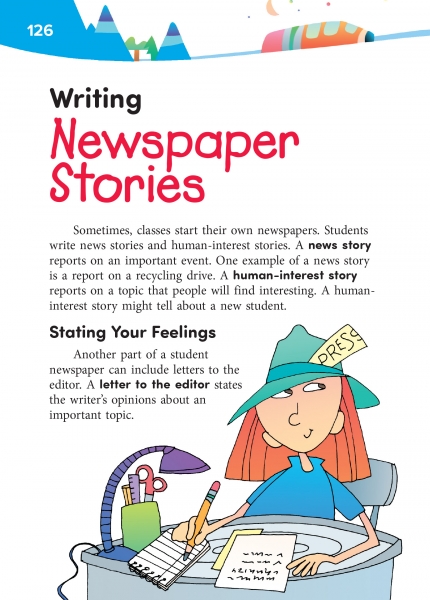Page 126 from

Start-Up Activity
Clip an interesting news story, human-interest story, and letter to the editor from a local newspaper and bring them in to read to your class. After each article, lead a discussion:
-
What is this story about?
-
What makes this story interesting?
-
Is the writer trying to explain something, to share something interesting, or to convince us?
Then have volunteers read the two paragraphs on page 126, explaining the difference between the three types of stories. Help students know that they can write any of those types of stories in this chapter.
Think About It
“A nonfiction writer is a storyteller who has taken an oath to tell the truth.”
—Russell Friedman

Start-Up Activity
Clip an interesting news story, human-interest story, and letter to the editor from a local newspaper and bring them in to read to your class. After each article, lead a discussion:
-
What is this story about?
-
What makes this story interesting?
-
Is the writer trying to explain something, to share something interesting, or to convince us?
Then have volunteers read the two paragraphs on page 126, explaining the difference between the three types of stories. Help students know that they can write any of those types of stories in this chapter.
Think About It
“A nonfiction writer is a storyteller who has taken an oath to tell the truth.”
—Russell Friedman
